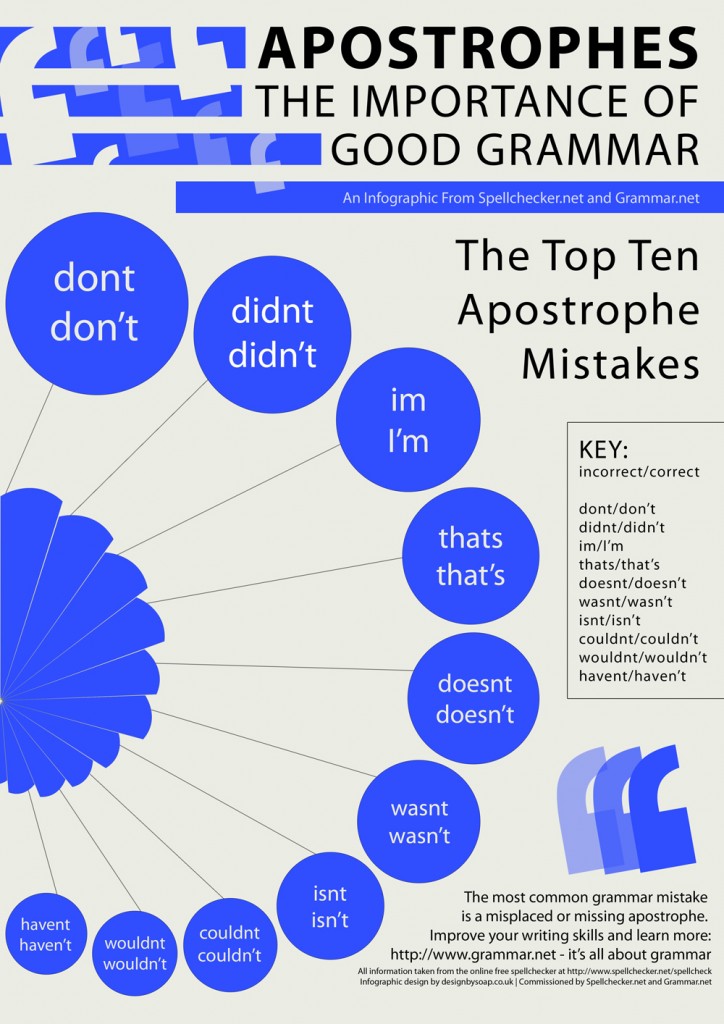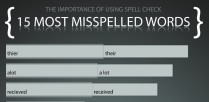Little things can make a big difference. This is especially true of apostrophes, punctuation marks used to show possession or indicate that one or more letters have been left out of a word. In the following paragraphs we’ll cover a few of the most common apostrophe rules so you’ll be familiar with when to use apostrophes .
First, however, take a look at the infographic below. It’s an excellent illustration of the difference this little mark makes in a word’s look and meaning.
 You can download full-size infographic poster here.
You can download full-size infographic poster here.
Embed this image to your site:
The ten words listed on the graphic are contractions, the shortened form of two words. An apostrophe is inserted for the missing letters. For instance, “she is” = “she’s”; “do not” = “don’t”; and “I am” = “I’m.”
Without the apostrophe, the word isn’t a contraction, and most likely it’s not a word at all. “It’s” would be an exception. Without an apostrophe, “its” is a possessive pronoun; with an apostrophe, “it’s “= “it is/it has.” Here are some additional examples:
let’s (let us)
could’ve (could have)
he’ll (he will)
Showing possession is another component of the apostrophe’s job description. The ‘s indicates the work of possessive apostrophes; the job description “belongs” to the apostrophe. Note also that the word apostrophe is singular. The possessive form of singular nouns is usually made by adding an apostrophe and s. Take a look at these apostrophes examples:
child’s toy
student’s laptop
fish’s pond
When a singular noun ends with an s or z sound, it is permissible to use apostrophes after s alone. However, if the word is only one syllable, an apostrophe and s should always be used:
Texas’ cattle ranches/Texas’s cattle ranches
dress’s buttons
To avoid confusion when forming the plural possessive of a word, write the plural first. Then add the apostrophe after s. However, if the plural doesn’t end with s, add an apostrophe and s. Consider the way these possessive apostrophes are marked:
the Millers’ home
dresses’ buttons
children’s games
women’s clothing
Apostrophes are no longer necessary when forming the plurals of letters and numerals, unless there’s a doubt of the meaning without an apostrophe. See the apostrophes examples below for clarification:
She received As and Bs on her recent grade report.
The restaurant scored 8s for service and food quality.
The 1950s were happy years for some people.
“Dot your is and cross your ts” is unclear, though; use apostrophes instead and change to “Dot your i’s and cross your t’s.”
Learning these apostrophe rules will help you know when to use apostrophes. Try out your acquired knowledge as you read web articles, work memos, the newspaper, and store signs. Apostrophe mistakes are right around the corner, just waiting to be discovered. What’s today’s tally?








